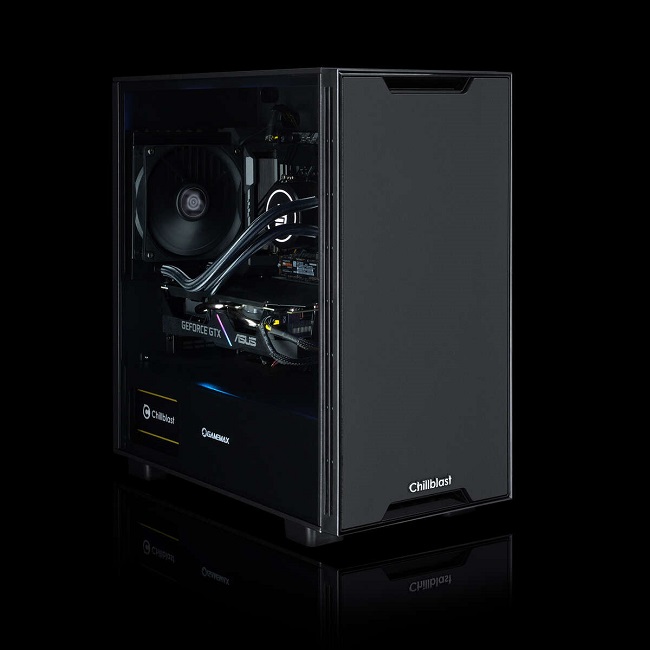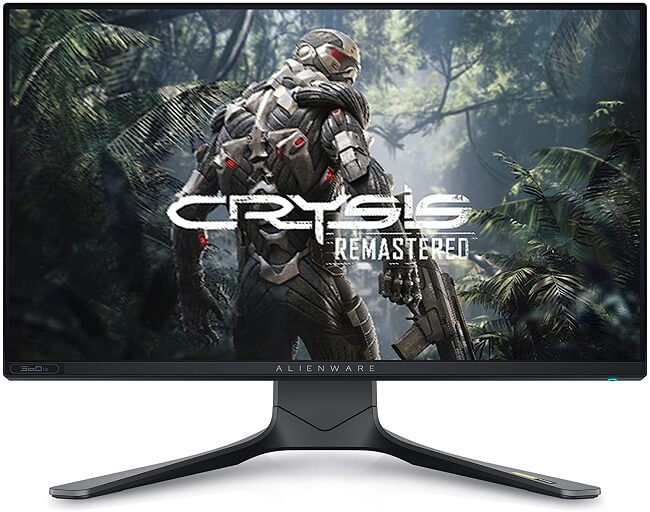If you’re in the market for a new gaming display there are two major features to consider: resolution and refresh rate.
Although there are heaps of extra factors, like panel type, response time, colour gamut support, and the overarching budget question, resolution and refresh rate are the most important. They decide how good your games will look and how well they’ll run. Even among those two, for many, refresh rate is the most important.
If you’ve been gaming on a 60Hz TV or monitor for years, though, you might be wondering what all the fuss is about. What does a higher refresh rate actually do? What’s the difference between 120Hz and 240Hz? If any? Does any of it make that much of a difference to your game?
And really, should you buy a high refresh rate monitor?
If you’re a competitive gamer, have a super-powered gaming PC, or just like the idea of having the smoothest gaming experience possible, the answer is almost certainly yes. Here’s everything you need to know about high refresh rate displays, and why it might be the best upgrade you could make to your PC.
What is refresh rate, and why is it important?

The refresh rate of a monitor is how many times per second that it “refreshes” what it shows you.
That number is given in Hz, so more traditional and non-gaming monitors, typically have a refresh rate of 60Hz. Some entry-level gaming displays might offer refresh rates of 75Hz, or 90Hz, while more typically higher-end models offer around 120Hz or 144Hz. Some faster displays can even be as fast as 240Hz, 300Hz, or even in extreme cases 360Hz.
That figure is effectively the maximum number of frames per second that the display can actively show you.
That’s an important point to consider, as a 360Hz refresh rate display won’t look drastically different to a 60Hz display if you’re only playing at 30 FPS. However, higher refresh rates that are backed up by comparable or higher frame rate outputs from the connected gaming PC can lead to much smoother motion in the animations you see, reduced instances of screen tearing and other negative visual artefacts.
Perhaps most dramatically, higher refresh rate displays can actually make you a more competitive gamer.
Higher refresh rates make games feel smoother
The most obvious immediate difference between a traditional 60Hz monitor and one with a higher, 120Hz or more refresh rate, is the smoothness of the screen’s animation. Whether it’s just moving the mouse pointer around the desktop, or playing games at higher frame rates, the overall experience just feels smoother.
And that’s actually because it is. Your eyes are being shown more frames per second, so there is less judder in the image.
This can result in a much more attractive and fluid-looking gaming experience, especially in high paced games. But also in more immersive, slower games where the nuances of character movement become more obvious with more intervening frames able to be shown.
Higher refresh rate displays also have improved motion resolution; that is the resolution your eye perceives the image at as you move the perspective or camera around.
Fast motion at lower refresh rates and frame rates leads to motion blur – not just that added by some in-game settings. If your brain can’t discern between individual images because they aren’t refreshing fast enough at high speed, then it’ll blur them together, leading to a lower perceived resolution.
Higher refresh rate displays add more frames in between the gaps left in more traditional 60Hz displays, leading to smoother motions when you’re standing still, and arguably even more so when you’re in fast motion yourself.
No more screen tearing, with or without syncing technologies

Screen tearing has been a problem with gaming since time immemorial, especially on high-end gaming PCs where higher frame rates are more common.
If you’ve been gaming some time yourself, you’ve probably come across it: that ugly split between two sections of the screen that seem to render out of alignment for a split second. It’s where the refresh rate of your monitor and frame rate output from your graphics card mismatch – either because your frame rate is too high for your monitor to handle, or too low to keep up with it.
Lower frame rates also cause extreme stuttering, which is itself ugly and uncomfortable to play with.
Syncing technologies like V-Sync, G-Sync, and Freesync, were all designed to fix this, synchronizing the frame rate of the game with the refresh rate of the monitor. But those technologies become far less necessary when you’re gaming on a high refresh rate monitor – especially when you have the graphical horsepower to back it up.
For one, a higher refresh rate monitor makes it far easier for higher frame rates to sync up with the display, making tears less likely in the first place. A higher refresh rate also means that any tears that do occur are visible on screen for far less time. Where a torn screen might appear for a millisecond or two on a 60Hz display, they will only be present for a fraction of a millisecond on a 144Hz or 240Hz display.
The fact that all high refresh rate displays will support either G-Sync or Freesync too, makes screen tearing on them a complete non-issue.
Get ahead of the game
If you like to play multiplayer games, especially competitively in ranked game modes, or even hope to compete at a semi-professional, or professional level, then a high refresh rate display is almost a must-have because it can actually help you be more competitive.
There are two reasons for this.
The first is that it increases the accuracy of the visual information you have to work with, by giving you a more up to date picture on a millisecond to millisecond basis. Every game renders individual frames a certain number of times per second, but you can only display them as fast as your monitor can refresh them.
So a 240Hz display is going to refresh multiple times in between the refreshes of a 60Hz screen. Where a gamer on a 60Hz display spends precious extra milliseconds waiting on a frame to show them that an enemy has popped up behind cover, a gamer on a 240Hz display will have already seen it and can begin to react far sooner.
“Frames Win Games”
Higher refresh rates also reduce overall system latency, which in turn, reduces your input latency, or input lag.
Every time you react to something in-game, every movement, every action, there’s a slight delay from you pressing the button, to that signal being recognized by the system, actioned in the game, and displayed on the monitor. A higher refresh rate display cuts down on that system latency by several milliseconds.
On an individual action basis, that can lead to a noticeable advantage over your opponents, but when multiple movements and actions are taken at the same time, it can result in you acting and reacting far faster, making you significantly more competitive.
The only caveat to all this is that you can only take advantage of that higher refresh rate if you already have a high-performance gaming PC that can output equivalent (or higher) frame rates. If you’re interested in upgrading your gaming system to make you a more competitive gamer, check out some of Chillblast’s Esports gaming PCs. They’ll give you a noticeable edge over the competition.
As Nvidia said previously, frames win games, and both new generation cards from AMD and Nvidia support low latency modes which can further reduce your input lag and improve your response time by a tangible level, giving you another important leg up in securing your next victory.
What do you need to run a high refresh rate display?

Higher refresh rate displays don’t inherently need anything different to run them than more traditional, or lower refresh rate displays. But, if you want to make the most of them, you need the hardware to back it up.
The first thing you absolutely need is a cable that supports those higher refresh rates. If you’re looking to play 1080p resolution at 144Hz, an older HDMI 1.4 connection is more than enough. But if you want to play at anywhere up to 360Hz, or at higher resolutions like 1440p, or even 4K, at higher refresh rates, you’ll need something more substantial.
HDMI 2.0 can get you 1440p at up to 144Hz, or 4K at up to 60Hz, but for 1440p at 240Hz and above, and 4K at anything over 75Hz, you’ll need an HDMI 2.1, or DisplayPort 1.4 or 2.0 connection.
High refresh rate displays will come with the port(s) you need to enjoy them at their full potential, but make sure that you have the right cable(s) and connectors on your PC or console to do the same.
Hardware Options
As for the hardware to run the high frame rates needed to match a high refresh rate, you don’t necessarily need the most powerful hardware in the world, depending on the games you play. If you’re just looking to play Esports games like CS:GO, League of Legends, or Rocket League, you can get away with an entry-level graphics card, like the Nvidia GTX 1660 Super. You can find that in the Chillblast Fusion Marine.
Do make sure, however, that you match it with a fast processor, as lower resolution play is often CPU limited, and you are very unlikely to hit extreme frame rates without a decent processor onboard to shoulder that load.
If you’re looking to play more graphically intense or modern games at higher frame rates, then you’ll need more powerful hardware. Once you get into 1440p territory and beyond, the graphics cards become the much greater limiting factor in whether you can match the high refresh rate of a display to truly make the most of its advantages. The best graphics cards for that are AMD’s new generation RX 6000, and Nvidia’s RTX 3000 cards.
If you have a mid-range budget, you’ll want something like an RX 6700 XT, or an RTX 3070. Those with deeper pockets will want to target the true flagship graphics cards of this generation, in the RTX 3080 or RX 6800 XT – though note these are pretty overkill for most competitive games, and are best suited to delivering smoother frame rates at high resolution in AAA and more immersive gaming experiences.
You’ll find these cards in PCs like the Chillblast Fusion Diablo, and Chillblast Official Williams Esports gaming PC.
Should you buy a high refresh rate display?

If you’re a gamer of almost any sort, the answer is almost certainly, yes.
When playing any kind of high-paced game, the effect, even at lower frame rates, is immediately obvious. If you can match those higher refresh rates with a higher frame rate too, then you’ll get an even greater advantage from switching to a high refresh rate display.
However, competitive players are the most likely to benefit from a switch to a faster monitor.
If you play games where every millisecond counts and you want to win and not be hamstrung by your hardware, then a high refresh rate monitor is absolutely essential to remain ahead of the competition. Once you reach the higher ranks, there’s no doubt that almost everyone is playing on a higher refresh rate display, and you’re only holding yourself back by not doing the same.
Just be sure that your PC can handle the frames to make the most of it. If you’re running an old and struggling PC, upgrade that first, as the increased frame rate and ability to play a wider array of games at higher detail settings and resolutions, will be more noticeable to start with. But follow it up with a fast display shortly after. It’s arguably more important than going up in resolution, especially once you get to 1440p.
You don’t need to get the fastest display in the world, as even some of the most seasoned pros will struggle to notice a huge difference between 300Hz and 360Hz, but the jump from 60Hz to 120Hz is massive, and for some, 120Hz to 240Hz is pretty noticeable too.






